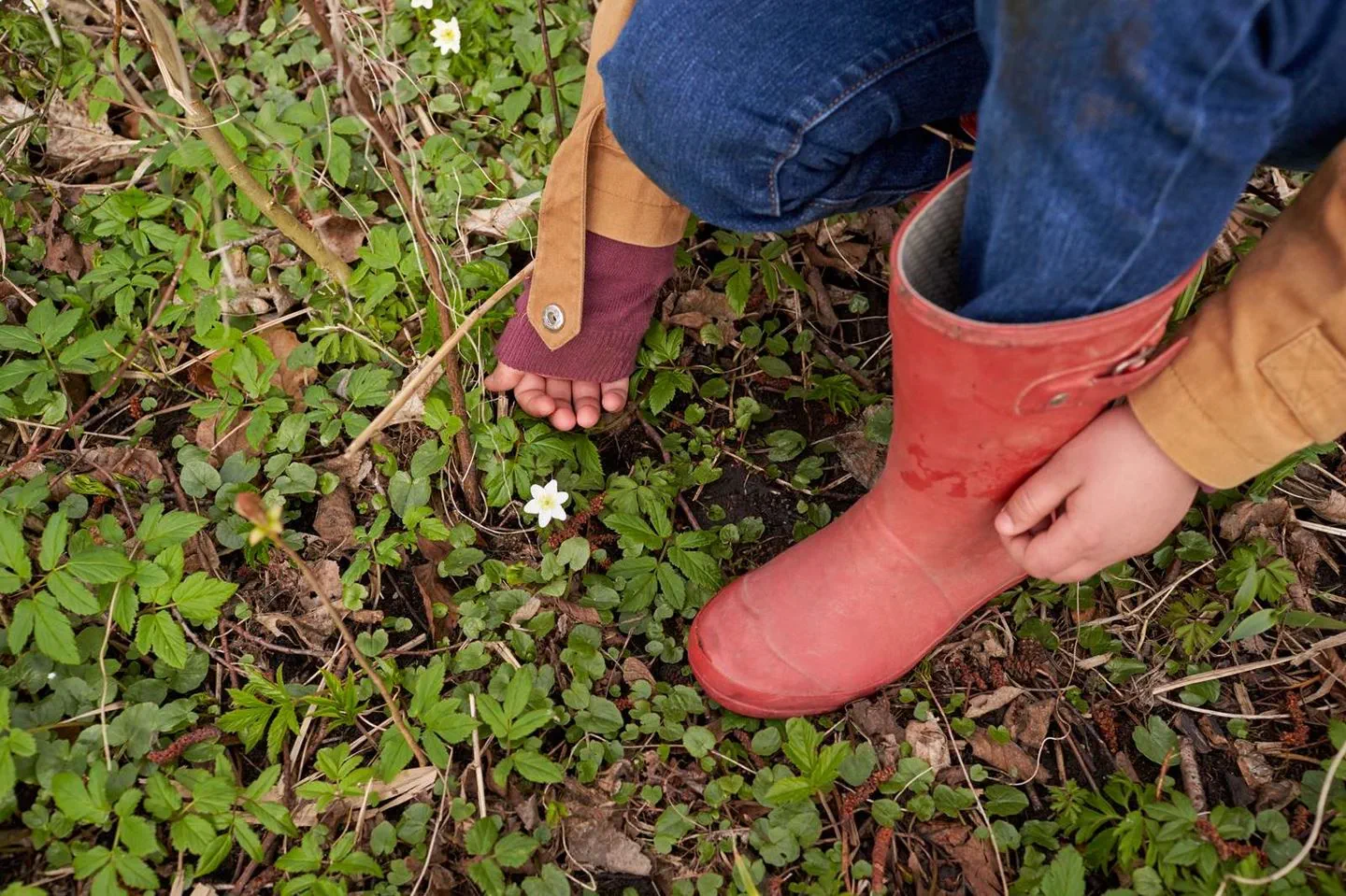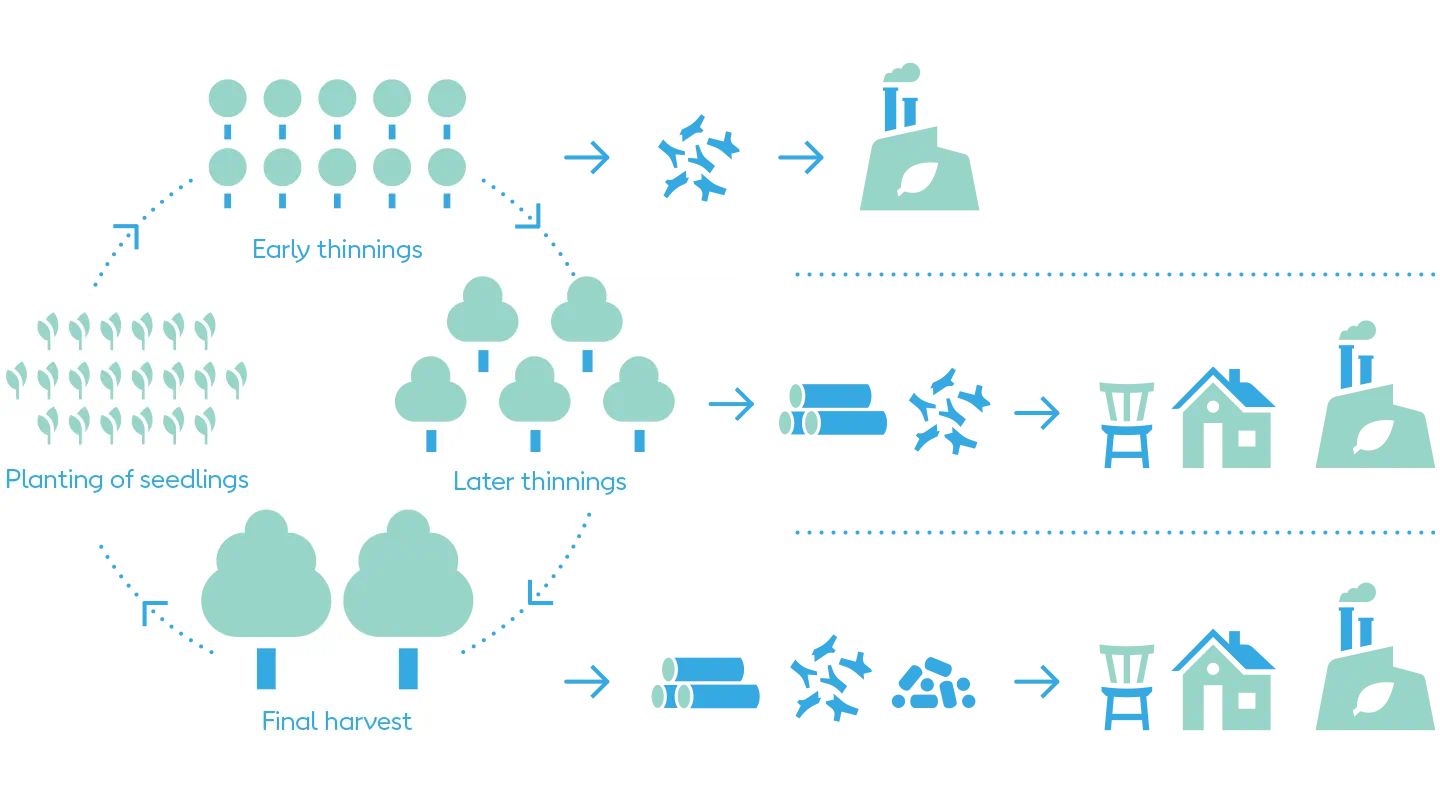30.01.2020
Using wooden biomass for energy generation has allowed us to almost fully retire coal. To ensure significant carbon savings, the biomass must meet strict sustainability criteria. If it doesn’t, it shouldn’t be used in energy generation. Over time, electrified alternatives can replace and supplement sustainable biomass.
Back in the late 1970s, the combined heat and power (CHP) plants in Denmark were converted from oil to coal to reduce import dependency on oil. However, as climate change emerged at the national and international political agenda and the demand for carbon reductions increased, politicians and energy companies began to explore greener alternatives to coal.
The same was true for Ørsted. Just over a decade ago, our coal-fired power plants were still a significant source of Danish carbon emissions. We used 6.2 million tonnes of coal in 2006 to power our CHP plants. At the same time, we had just launched our first strategy to transform our business from fossil fuels to renewables, because we strongly believed the future of energy lay in renewables.
How could we decarbonise our heavy fleet of power plants while at the same time continue to provide flexible heat and power at a competitive price?

We needed an alternative fuel to coal to ensure a greener Danish energy system. Among politicians as well as our municipal district heating customers, there was widespread support for wooden biomass as the most climate-friendly alternative, whereas converting to gas would make Denmark dependent on another fossil solution for decades. On this basis, we decided to convert all our CHP plants to wooden biomass. Compared to coal, using biomass has avoided 90 million tonnes of carbon emissions since 2009.
Not all biomass is sustainable
At Ørsted, we only want to use biomass that is sustainable. Non-sustainable biomass should not be used in the energy system at all. So, how could we make sure we would only use sustainable biomass?
It’s not a simple task to determine sustainability of biomass, but it is possible. Today, our biomass is certified and meets the requirements of what is now the Danish industry agreement on sustainable wooden biomass. It defines the difference between sustainable biomass and non-sustainable biomass.
Requirements to ensure significant carbon savings
When biomass is burned, it emits the same or slightly more carbon than coal per unit energy produced. The important difference is that carbon from biomass is already part of the planet’s natural carbon cycle, whereas carbon from coal and other fossil fuels adds new carbon to the atmosphere.
Wood residues from forestry and industries can be used for energy generation

The value of a certification system
To ensure that our suppliers comply with our sustainability requirements, we’ve implemented the Sustainable Biomass Program (SBP) certification system. Under this, independent third-party auditors monitor and certify that the suppliers meet our sustainability requirements. In 2019, 96% of the wooden biomass we sourced was certified. By end of 2020, it should be 100%.
Insights from our sustainable
biomass experts

Peter Kofod Kristensen, Senior Lead Sustainability Advisor, and Lisbeth Lyck Sevel, Senior Sustainability Advisor. Both work in our Bioenergy business and are educated and trained forestry experts. Peter and Lisbeth help ensure that all the biomass used is sustainable and delivers significant carbon savings.
Why do you conduct site visits at our suppliers?
Peter: We conduct site visits because it is key for us to know who we are dealing with. We use the forest certification schemes like FSC© and SPB as the backbone of our sustainability assurance, our visits are focused on motivating and guiding our suppliers to meet our requirements.
What are you looking for?
Lisbeth: Each forest is unique, so we need to get on the ground to understand it. We need to understand our suppliers, how the forests are managed and the products produced. Our aim is to understand the local context and any risks each supplier is working under. This helps us to develop our cooperation with our suppliers.
Why do we need this documentation?
Lisbeth: To be trustworthy! We need the numbers and pictures to document that the biomass we source is sustainable and that we reach the carbon reduction targets we have set and report on every year.

